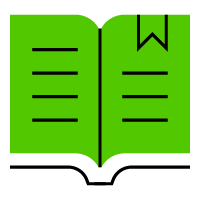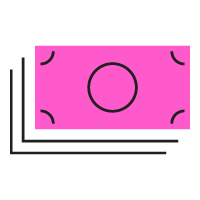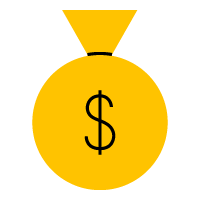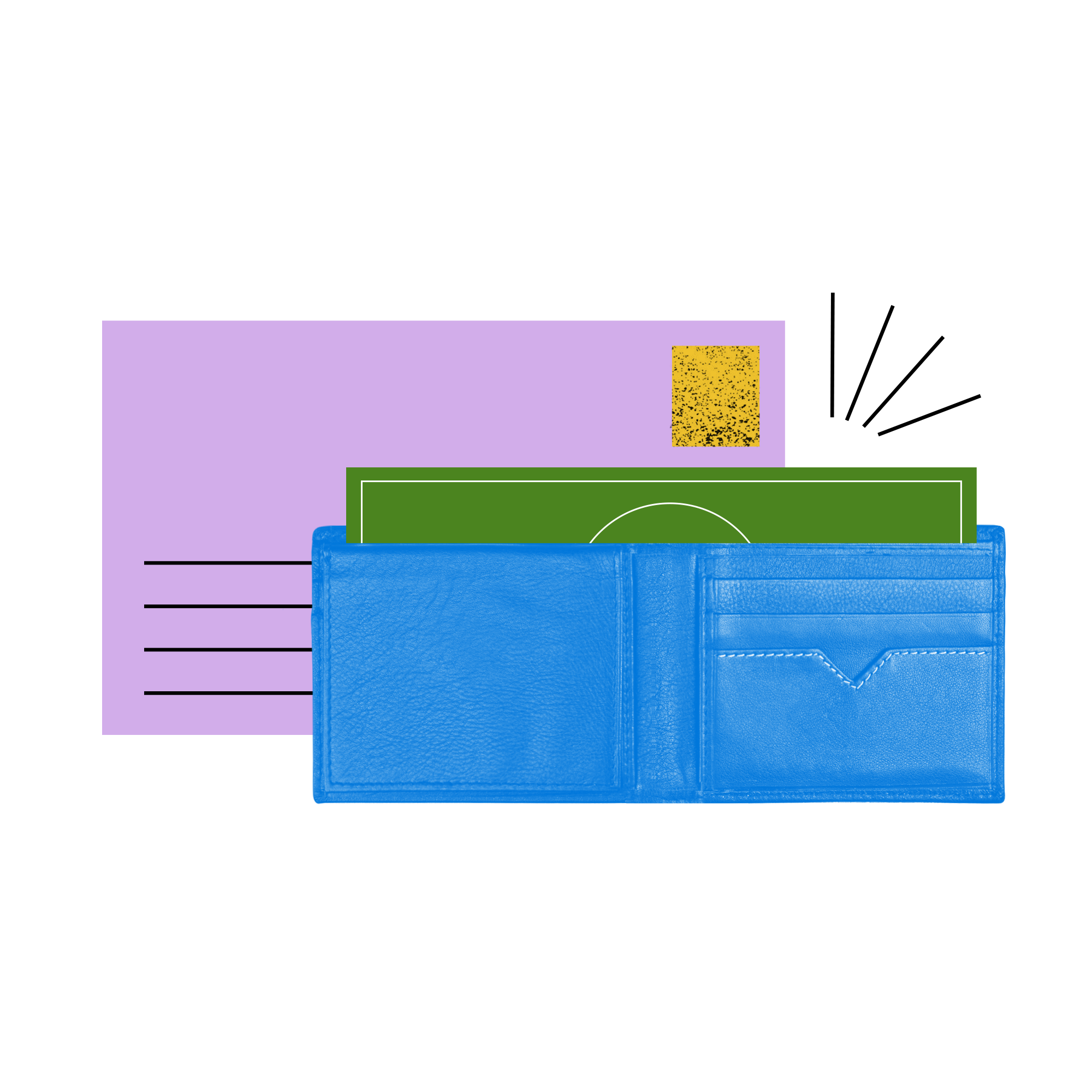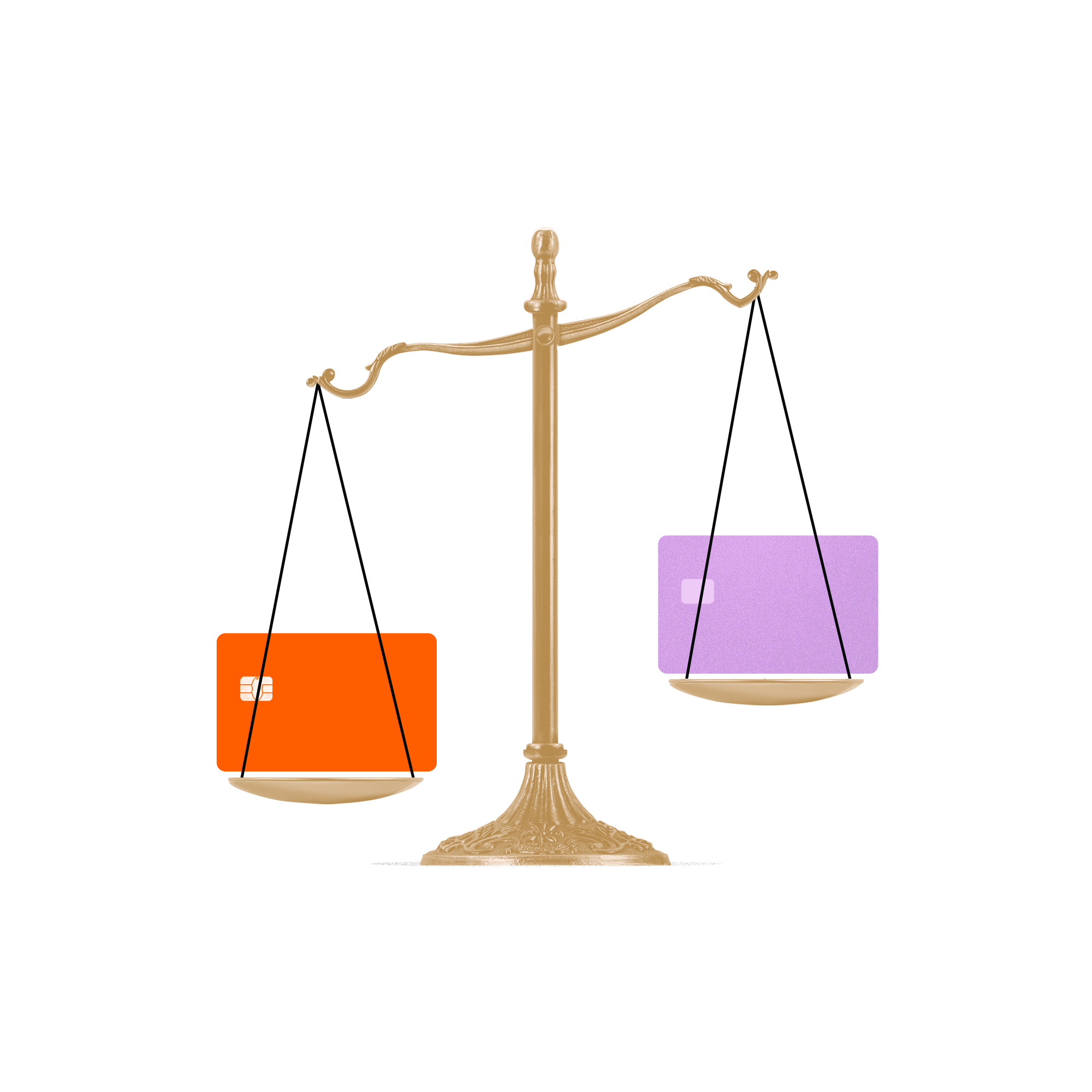What is debt? It’s money that you owe and are expected to pay back.
Debt comes in many forms. Maybe you got a student loan to pay for your education, an auto loan to buy a car or a home loan to buy a house. You’ve probably used a credit card to buy goods or services. Perhaps you applied for a business loan to start a business or expand one you already own. Some people use debt to pay bills or even to pay off other debt.
Debt can help you achieve your financial goals, but it can also burden you with higher payments that you can’t afford. To use debt well, you should know which types are productive and which aren’t, how to assess whether you have too much or not enough, and when and how to pay it down.
Whether debt is labeled good or bad depends primarily on how you use the money. “Good” debt helps you increase your income or acquire assets. “Bad” debt is used to buy things that almost never appreciate in value, like cars, clothing, electronics, or other consumer goods or services. Carrying a balance on a credit card is also an example of “bad” debt.
Examples of “good” debt include student loans, business loans and mortgages — all things that one might expect to provide more value than the amount of debt.
QUICK GUIDE
Can I use debt to pay my bills?
It’s important to remember that even so-called good debt can be risky. A college degree might not enable you to land a high-paying job. Many start-up businesses never become profitable. Property values don’t always go up.
With the exception of a no-annual-fee credit card that you pay off in full and on time every month (thereby avoiding paying any interest on the purchases you charge to your card), debt typically isn’t free. You’ll be charged interest and probably a variety of fees as well. In effect, you’re paying for the opportunity to spend money you might not have.
The decision to take on debt should be weighed carefully even if the debt is for a productive reason. When possible, try not to borrow unless you have a clear plan for repayment.
If your debt keeps you awake at night, you may have more than you can handle. That’s a sign that you should make an effort to pay down some or all of it before you borrow more.
Apart from restless nights, here are some other good reasons to pay down debt.
- Paying interest because you have debt means you have less money for other needs and wants. The higher the interest rate and the longer you take to pay off the debt, the more you’ll pay in the long run, making the debt more.
- Say you want to buy a home. If your monthly credit card bill along with your auto, student and other loan payments consume too large a percentage of your income, you might not be able to qualify for a mortgage. Using a large percentage of your available credit can affect your credit, which is also a factor in getting a mortgage.
- According to the Community Mental Health Journal and the European College of Neuropsychopharmacology, debt and financial issues can be stressful and have been linked to stress-related health problems like depression, anxiety and migraines.
- Debt can lead to marital problems. Couples may argue about how much debt they have and who’s responsible for it. Debt can also hurt your ability to budget, save for emergencies and large purchases, and achieve your financial goals as a couple.
Paying down debt can help you …
- Improve your standard of living
- Spend more on your needs and wants instead of on interest payments
- Become more financially secure
- Cut the number of monthly bill payments you have to track
- Boost your credit health
- Model good financial behavior for your kids
The basics
The first step to try to reduce your debt is to make a complete and accurate list of what you owe, says .
For each debt, write down the name of the creditor, total amount you owe, minimum monthly payment, interest rate, and whether your payments have been late or on time.
“Writing helps bring clarity,” says Ogechi Igbokwe, founder of OneSavvyDollar.com, an online job search service. “Putting all your debt on paper can be a scary experience because it makes your debt a little more real.”
The second step is to call each of your creditors to find out whether you can get a lower rate, longer repayment term or other relief. Even if the answer is no, you’ll have a better understanding of your situation and you’ll know your options.
Snowball or avalanche?
The third and fourth steps are to build a budget to find the maximum amount you can afford to pay every month toward your debt and decide how to prioritize your debt repayment. You might consider using a debt repayment calculator to help plan your monthly payments. You should always do your best to make (at least) the minimum payment for every debt every month to help protect your credit scores.
Two popular debt repayment strategies are known as the snowball and the avalanche methods.
Snowball
To use the debt snowball strategy, make all the minimum payments for your various debts and then apply the rest of your available budget toward your smallest debt amount. When your smallest debt is eliminated, use the extra money that you’d been paying toward the smallest debt and allocate it toward your next-smallest debt until that one is zeroed out, and so on.
The disadvantage of this approach is that it ignores interest rates, which can make paying down debt more expensive. On the other hand, you’ll be able to pay off fewer debts sooner and may create positive momentum.
Avalanche
To use the debt avalanche strategy, make all your minimum payments and then apply the rest of your budget toward whichever debt has the highest interest rate. When that debt is paid off, use your now-increased debt-busting budget for whichever debt has the next-highest rate.
The disadvantage of this approach is that if your highest-rate debt takes many months or years to pay off, you won’t get the early win of paying off a smaller debt to help motivate you.
If you’re not sure which method to use, you can combine the two strategies. For example, you could pay off your smallest debt first for a quick win and then focus on your highest-rate debt for bigger savings.
The important point is not which strategy you choose, but that you pick one debt and get started paying it down, says Nolan Martin, a financial advisor helping military service members and creator of BudgetChaos.com.
“Every person has a different reason for [choosing] which loan to pay off [first],” Martin says. “I just want them to pick the one that makes them the most upset and pay it off as soon as possible.”
Other options
If neither the snowball nor avalanche method is adequate for your situation, you might need to consider more-drastic options to reduce your debt. Here are four possibilities.
Balance transfer card
This approach involves transferring your current credit card balances to a new card with a lower interest rate, also known as the annual percentage rate.
The advantages:
- You could save on interest if you follow the rules of the balance transfer offer and pay down the balance before the introductory interest rate (if available) expires.
- You may have fewer payments to track.
The disadvantages:
- You may have to pay a balance transfer fee, typically around 3% or 5% of the amount transferred.
- Any available introductory interest rate might only apply to balance transfers, not new purchases.
- The interest rate will rise at the end of the introductory period (if available), which could last anywhere from six to 21 months.
Debt consolidation
This strategy involves refinancing multiple debts with high interest rates into one loan with a lower rate. For example, you could get a personal loan and use the money to pay off your credit cards or other obligations.
Debt consolidation could make it easier to pay down your debt and reduce your interest expense by making it so you only have to pay one bill every month — but your lender might charge an origination fee on the new loan.
Credit counseling
This option involves setting up a strict debt-management plan and negotiating with credit card issuers to try to get lower rates on your existing debt. You may have to pay a monthly fee to any credit counseling agency or company that you work with in exchange for their help. Be careful when selecting a debt counselor, as some unscrupulous ones exist.
Debt settlement
Debt settlement involves hiring a company or agency to try to negotiate partial forgiveness of some of your debt so that it’s more manageable for you. The Consumer Financial Protection Bureau generally does not recommend debt settlement. To learn more about debt settlement companies, visit the Consumer Financial Protection Bureau’s site.
When you’re weighing your options, it’s important to know that all of these strategies take time to complete. They could also affect your credit scores, and they may involve fees that wipe out any savings from a lower rate or debt settlement offer that you get.
QUICK GUIDE
Should I borrow money to pay debt?
Now that you’ve looked at the basics of how to use debt and when and how to pay it off, you’re ready to learn more about specific types of debt and if they’re right for you.
Though each type of debt has its own specific requirements, the essentials are the same. You should understand your financial goals and reasons for borrowing, know how much you owe, and have a smart, strategic plan to pay down your debt when it’s appropriate for you to do so. You’ll also want to make sure you’re familiar with the fundamentals of credit along with how to build and maintain it.
*Approval Odds are not a guarantee of approval. Credit Karma determines Approval Odds by comparing your credit profile to other Credit Karma members who were approved for the personal loan, or whether you meet certain criteria determined by the lender. Of course, there’s no such thing as a sure thing, but knowing your Approval Odds may help you narrow down your choices. For example, you may not be approved because you don’t meet the lender’s “ability to pay standard” after they verify your income and employment; or, you already have the maximum number of accounts with that specific lender.




